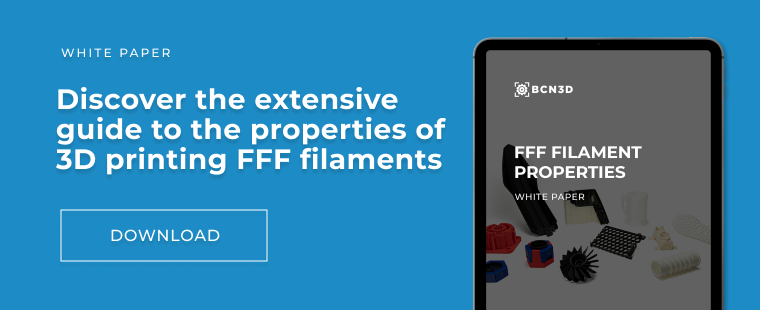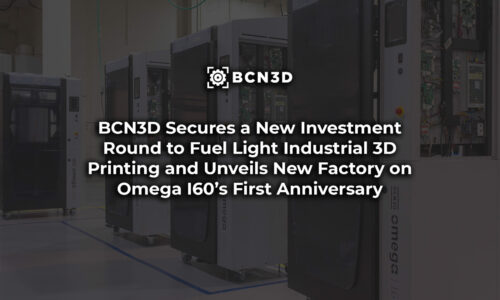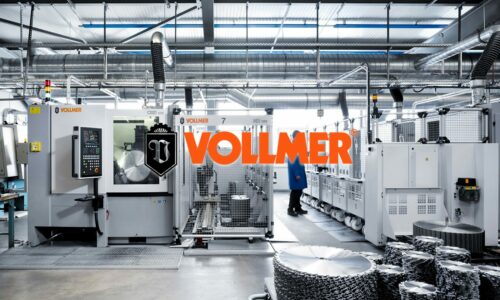PLA vs PLA+: Main differences between these two materials
PLA, or Polylactic Acid, is one of the most common materials in FDM 3D printing due to its ease of printing. However, a new variant of this material has emerged, improving certain characteristics considerably without losing the unique properties of PLA; PLA+. In this article, we will make a comparison of PLA vs PLA+ and discover what makes each of them stand out.
We will discuss the following points of both materials:
- Technical properties of PLA vs PLA+
- Aesthetic properties of PLA vs PLA+
- Ease of printing and cost
Technical properties of PLA vs PLA+
Polylactic acid (PLA) is a material that does not stand out for its technical properties. Its thermal resistance is not excessively high, it can only withstand temperatures of up to 50 degrees, and it does not have a great mechanical resistance either, only resisting impacts or stresses of 3 KJ/m^2. Its Young’s modulus is almost 2500 MPa, but its elongation at break is only 5%, making it a very rigid material.
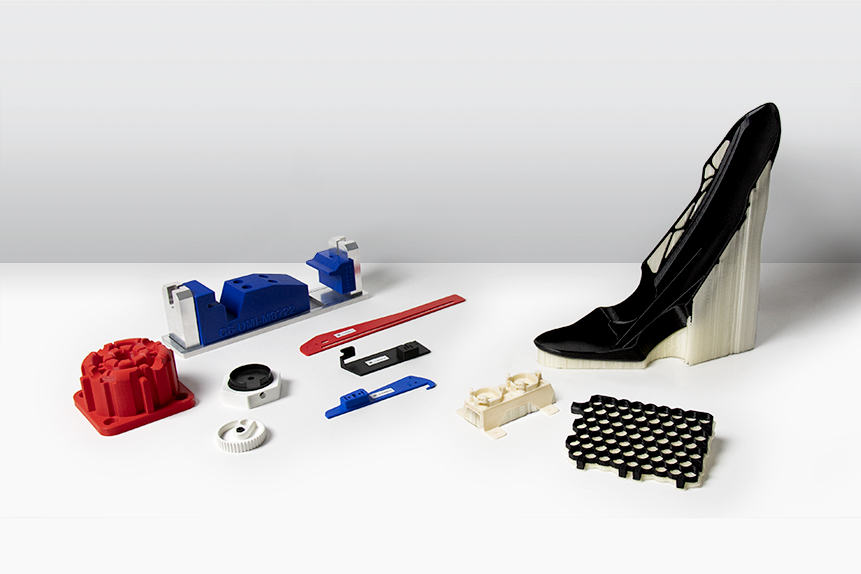
However, PLA+, known as Tough PLA at BCN3D, varies in certain respects. Technically speaking, its capabilities are notably superior to those of common PLA; it has a somewhat higher thermal resistance, being able to withstand temperatures of up to 70º. Its mechanical resistance is considerably better than that of PLA, being able to withstand impacts of up to 22 KJ/m^2, i.e. it is almost 8 times more resistant than normal PLA. Its Young’s modulus is slightly higher than PLA, but its elongation at break is almost 20%, making it a much less rigid material.
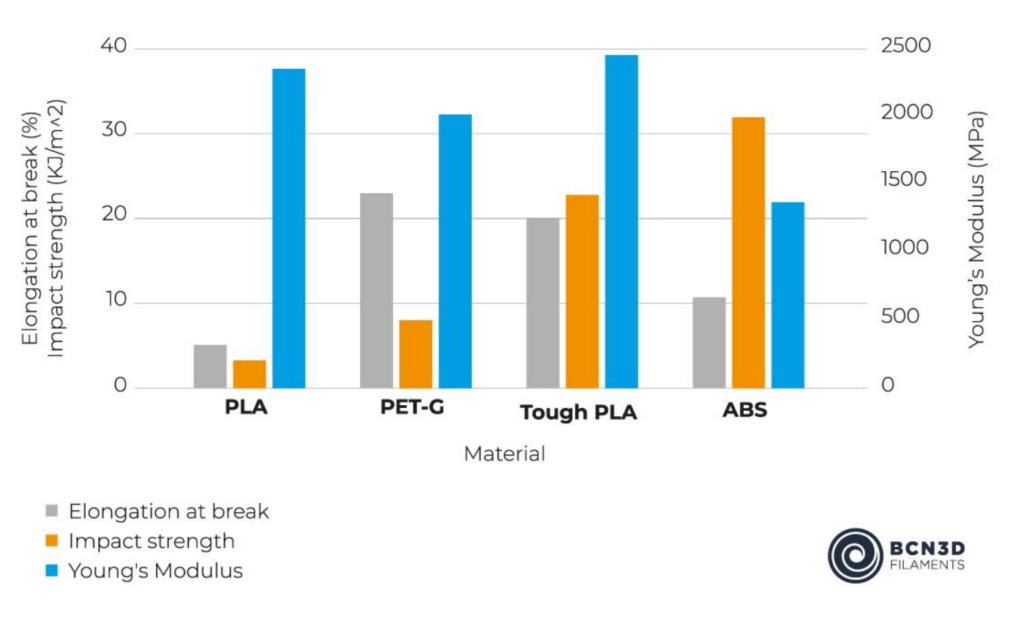
Aesthetic properties of PLA vs PLA+
Talking about the aesthetic properties of two materials when comparing them is perhaps more subjective than when comparing their technical properties. Depending exclusively on tastes or applications that the model is going to be used for, and ignoring its technical properties, we can choose one material or another.
In this case, if we compare PLA vs PLA+ aesthetically speaking, we could say that the main difference between these two materials is the matte finish of PLA+ versus the shinier finish of normal PLA. It is true that by varying the printing temperature of PLA, you can obtain different finishes and textures, achieving a finish more similar to that of PLA+. However, these changes could make it difficult to print with this material.
Within the BCN3D filaments, another of the “advantages” that PLA could have over PLA+ is the diversity of its colors. PLA+ only has 4 possible colors: white, black, blue, and red, while its brother has a much wider range, being able to print colors such as green, yellow, orange, or even gold.
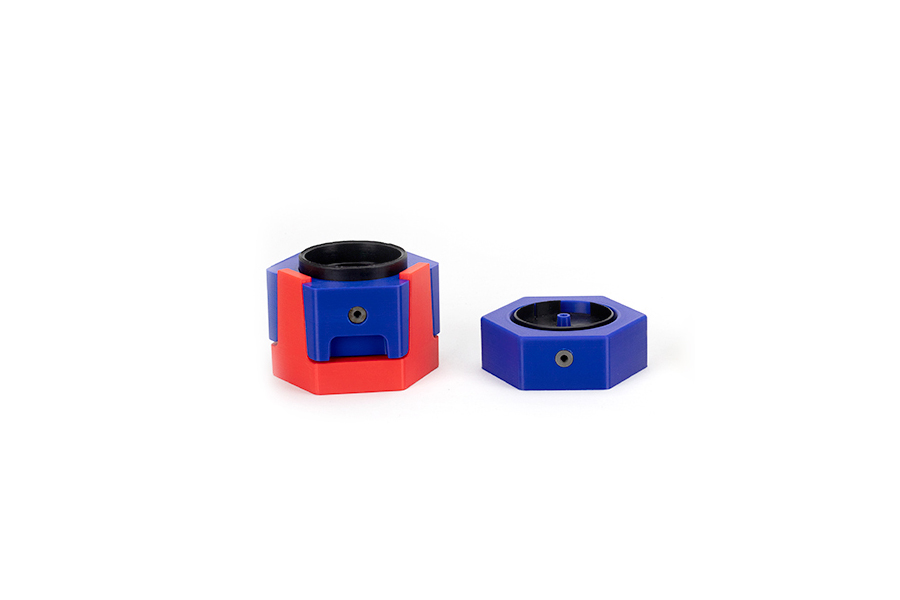
It should be noted that depending on the supplier of the material itself, you can find a much wider variety of colours, finishes and textures within PLA. Nor should we lose sight of the fact that since it is 3D printing, we have endless possibilities when it comes to post-processing our models, which means that if we are a little skilled with these techniques (sanding, painting, epoxy coatings…), we can achieve any type of finish we set our minds to.
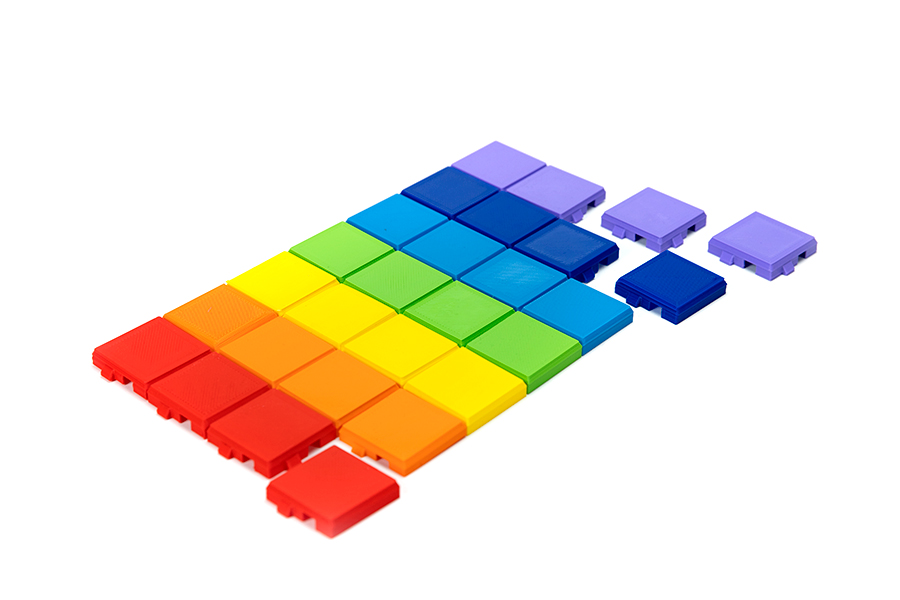
Ease of printing and cost
Finally, if we talk about the cost of printing, these two materials have very similar prices. In the case of BCN3D filaments, PLA is priced at around €25 for a 750g spool, which translates into a cost per gram of just over 3 cents. The 750 g spool of PLA+ on the other hand is priced at around €30, which means that each gram of PLA+ costs 4 cents, which is slightly more than PLA. Both materials are therefore equally accessible. It should not be overlooked, however, that each filament brand and supplier sets its own prices and these can vary from one manufacturer to another. However, PLA is usually one of the cheapest materials in the FDM 3D printing market.
Finally, in terms of the printability of these two materials, both are generally quite easy to print. It is true that PLA requires a somewhat lower printing temperature than PLA+, so it could be argued that PLA+ is somewhat more expensive to print. However, taking into account that this temperature is still low, that it does not give off any odor, does not need a special adhesive, can be printed at room temperature and without a closed environment, and does not require a very elaborate or excessively powerful printing system, it could be said that these two materials are among the easiest to print within what is FDM 3D printing of polymers.
Conclusion
In conclusion, we could say that both PLA and PLA+ are two materials that stand out for their accessibility and ease of printing. They are two affordable materials that do not require a great deal of knowledge to print. Among them, PLA+ stands out over PLA for its thermal and mechanical resistance, but the wide range of options in terms of colors, finishes, prices, etc. offered by PLA is incomparable to any other material.

